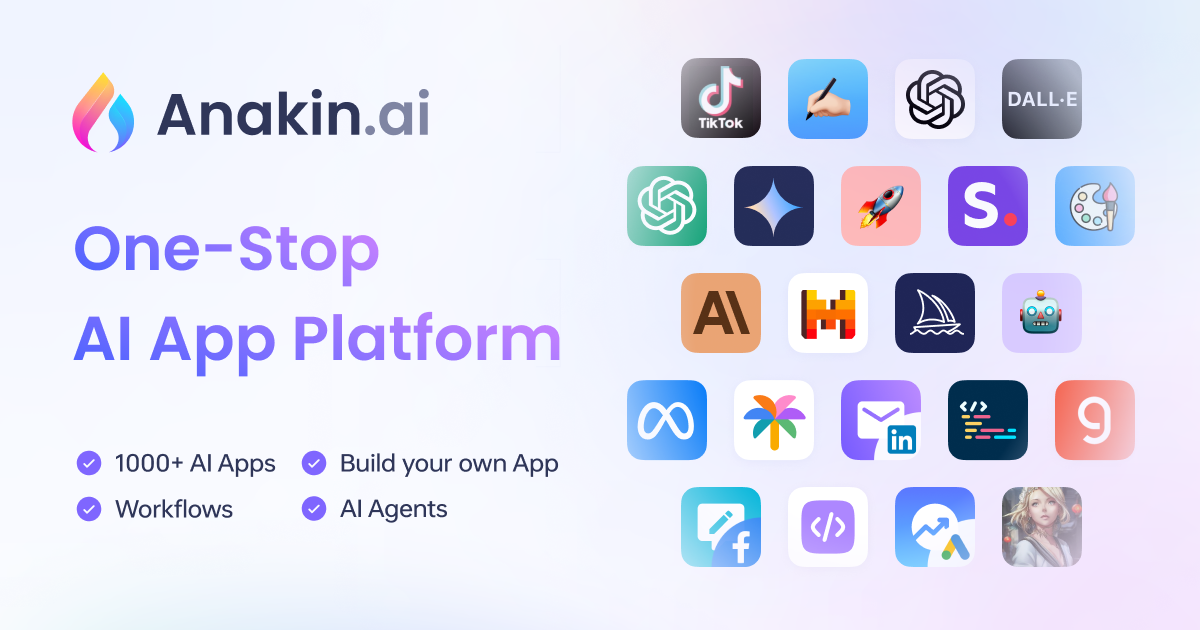The artificial intelligence landscape has long been dominated by titans like OpenAI and Anthropic. Enter Kimi k1.5, a multimodal large language model (LLM) developed by Chinese startup Moonshot AI, which is now making waves with its unprecedented performance in reasoning, coding, and vision tasks. Early benchmarks suggest this compact model not only rivals OpenAI’s flagship O1 but outperforms GPT-4o and Claude 3.5 Sonnet in critical areas—marking the first credible threat to OpenAI’s dominance in years.
Discover Anakin AI, the ultimate destination for cutting-edge Large Language Models (LLMs). Whether you’re tackling complex reasoning, building conversational agents, or exploring multimodal creativity, Anakin AI has it all:
GPT-4o Turbo, Open AI o1 for blazing-fast precision.
Claude 3 Opus for deep, context-rich conversations.
Gemini 1.5 Flash for unrivaled multimodal performance.
Meta Llama 3.3 Vision for seamless integration of language and vision.
Ready to see what the future of AI looks like?
👉 Find Out with Anakin AI Today!

Benchmarks That Redefine Expectations
Kimi k1.5’s performance across standardized tests has stunned industry observers. Below is a breakdown of its head-to-head results against leading models:

Key Takeaways:
- Short-Chain Reasoning: Kimi outperforms GPT-4o and Claude 3.5 Sonnet by up to 550% in rapid problem-solving tasks like the AIME math competition.
- Long-Chain Reasoning: Matches OpenAI O1 in extended reasoning challenges, such as debugging multi-step code or solving proof-based mathematics.
- Vision Prowess: Nearly ties Claude 3.5 Sonnet, a model specialized for visual tasks, in the MMMU benchmark.
What Makes Kimi k1.5 Unique?
- Native Multimodal Design
Unlike models that treat vision as an add-on, Kimi k1.5 processes text and images jointly during training. This allows it to solve geometry problems with diagrams, analyze physics simulations, or interpret technical charts without requiring separate modules. - 128k Token Context Window
Kimi can digest novel-length inputs—think research papers, legal contracts, or sprawling codebases—without losing coherence, thanks to its optimized partial rollouts and memory management.
Efficiency Innovations
- Long2Short Optimization: Borrows insights from long-chain reasoning tasks to enhance short-chain performance, achieving speed without sacrificing depth.
- Simplified Reinforcement Learning: Drops resource-heavy methods like Monte Carlo tree search, reducing computational costs by ~40% compared to OpenAI O1.
Head-to-Head: How Kimi Stacks Against Competitors
- OpenAI O1: Still the gold standard for pure text tasks (e.g., creative writing), but lags in multimodal integration.
- Claude 3.5 Sonnet: Excels in visual creativity but struggles with high-stakes math and coding benchmarks.
- DeepSeek R1: A coding powerhouse (Codeforces Elo: 2,029) but lacks Kimi’s multimodal versatility.
- GPT-4o: Mid-tier performance across the board, now overshadowed by Kimi’s specialized strengths.
Kimi’s Edge:
- Cost-Effective: Lower API pricing and training overhead make it accessible for startups and researchers.
- Speed: Delivers GPT-4-level answers in half the time for STEM and coding queries.
Real-World Applications
- Education: Solving Olympiad-level math problems (MATH500 score: 96.2) and explaining steps visually.
- Software Development: Ranking in the 94th percentile on Codeforces, outperforming most human coders.
- Research: Parsing 100+ page technical documents or datasets with 128k-token context retention.
- Enterprise: Multimodal analysis of financial reports, engineering schematics, or legal texts.
Availability and Accessibility
Kimi k1.5 is currently available in preview through Moonshot AI’s Kimi Smart Assistant App and web platform Kimi.com. Developers can also integrate its API via Moonshot’s OpenPlatform, with tiered pricing tailored for small-scale experiments and enterprise deployments.
Why This Matters for the AI Industry
Kimi k1.5’s emergence signals a seismic shift in the AI race. For the first time, a non-OpenAI model has matched—and in some cases surpassed—the reasoning capabilities of the industry’s most advanced systems. Its success underscores the viability of focused innovation over sheer computational scale, offering a blueprint for startups aiming to disrupt entrenched players.
While OpenAI retains an edge in creative and linguistic tasks, Kimi’s dominance in math, coding, and vision challenges positions it as the go-to tool for technical domains. As enterprises and researchers increasingly prioritize efficiency and specialization, Kimi k1.5 could catalyze a new era of niche, high-performance AI models.
The Bottom Line: Kimi k1.5 isn’t just another “GPT rival”—it’s a proof point that the AI playing field is leveling. For developers, academics, and businesses seeking cutting-edge reasoning at lower costs, this model is worth a closer look.
